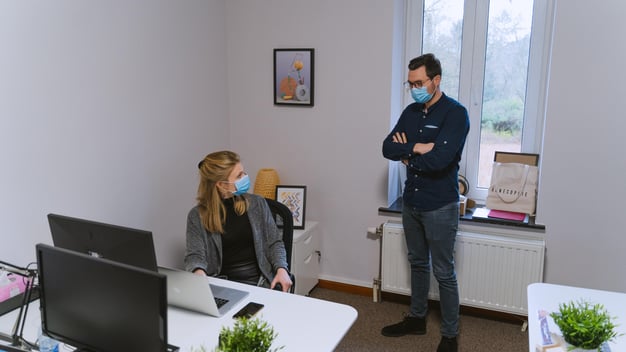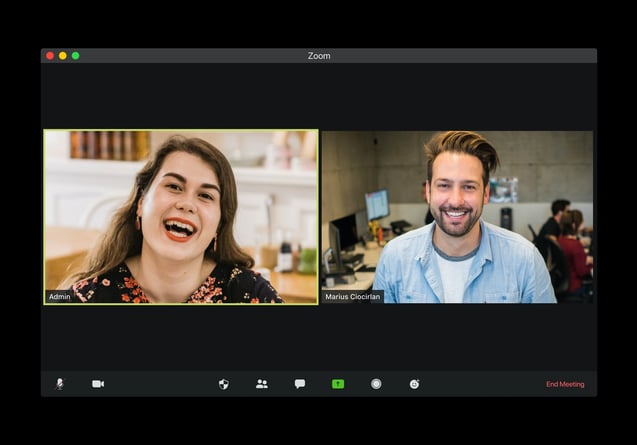New Resource: A Practical RAG Maturity Tool Shaped by the Blue Light User Group
At Head Light, we’re committed to ensuring that learning from the Blue Light sector is not just disc...

Hybrid working is here to stay. The challenge now facing businesses is how to make this work in practice for all - and look beyond the operational issues to those of engagement, connection, clarity and progression.
Forty-one per cent of businesses in the UK will have adopted hybrid working by 2023. A separate study found that 44% of formerly office-based workers want to adopt a part-office, part-remote hybrid model of working.
While hybrid working means different things to different people and there is no ‘one size fits all’, hybrid working is here to stay. Indeed, it has become such a fundamental aspect to working life that just over half of UK workers who currently have the option to work both remotely and in the office, would consider quitting if the hybrid option was removed.
And now reality kicks in.
How will hybrid working work in practice for the here and now – and for the future?
With the technology sorted and contracts amended, the challenge for HR leaders now is to make hybrid working work.

Research by organisational scientists, Cristea and Leonardi, shows that workers who have a higher amount of ‘face time’ with their line managers (i.e. being located in the same workplace) are given better, more interesting, higher-profile, more developmental work assignments.
Not only that, but they are also promoted more frequently.
Action is needed to mitigate such outcomes.

For some managers, engaging, managing and building trust with a geographically-dispersed team is not new. For years, managers have been able to bring people together to collaborate and check-in with those in different locations. They have learned how to build rapport, how best to catch up with and motivate people. Think of sales leaders with field-based teams and businesses with operations in more than one country.
For some, undoubtedly, they are still finding their way – and the HR lead can give them the tools to help them on this journey.
Getting to know the team and each member’s contributions and strengths can be achieved outside of in-person, team-building events.
A Team 360 provides a single window into the strengths and contributions of each team member against the core competencies needed.
You can read more about how our Talent 360 tool does this. This article also highlights the functionality to look out for in any 360 tool should you want your teams to get such valuable insight.
All teams need a shared understanding of team objectives – and the organisation’s – as well as knowing how their own goals contribute towards these. Everyone pulls in the same direction and is singularly focused. These can be far more difficult to share and socialise when people are not in the office full time, with their ‘water cooler’ conversations and informal check-ins with the boss and team members being less frequent.
Tools, such as Talent Performance, make the link clear and direct – a visual reminder each time objectives are discussed, and progress is updated. Talent Performance gives managers the option to link individual goals with those of the team and also those of the wider organisation. It brings about clarity of purpose and contribution – and focus and reasoning to individual goals and actions.
At a time when there are no longer the in-person, unplanned check-ins, this constant reminder is important.
Giving and receiving feedback on team members builds trust, cohesion and insight. However, it needs a platform to make this easy to do and simple to record.
Performance review software, such as Talent Performance, enables an individual to seek feedback on their performance in their specific goal areas and on the behaviours and practices that have become even more important now we are less likely to be co-located, such as collaboration, communication and networking. Feedback is brought together in one area, and then used to inform the performance conversation between manager and direct report – and development action planning.
We have witnessed a surge in the use of our Talent 360 and Talent Performance software as teams get to grips with working together, but apart.

In many organisations, the annual performance review has already been replaced by ongoing performance conversations. This shift has increased agility and relevance – and allowed for greater coaching-type discussions concerning goals, objectives and 'next steps'.
How much more difficult is this to achieve without the in-person and informal catch-ups?
Now, regular check-ins are held – although these need to be supported with a way to record actions, feedback and next steps.
Performance software may allow for this. But not all systems have the capability.
Talent Performance gives the user the ability to enter updates whenever needed – and the manager (and the HR lead if required) can track and monitor what is happening via the analytics dashboard. It means progress can be seen instantly and updated between the more formal check-ins.
We have witnessed this in action.

With a mix of both an office-based and branch-based workforce, Newcastle Building Society needed an online performance portal that everyone could access – even when remote, home-based working was introduced during the pandemic.
They choose to adopt Talent Performance.
The result has been positive for the firm: conversations are more frequent, there is a strong focus on what action needs to be taken and the ownership of success has been firmly placed in the hands of each team member.
You can read the Newcastle Building Society story here.
The shift towards greater individual ownership of goal achievement and ultimately career path and progression can be supported by talent management software.
No longer are individuals passively waiting for performance management to be ‘done to them’ – the process-driven annual appraisal meeting that tended to be all one way in terms of feedback and generated little more than a rating. Now individuals understand the role they play and the contribution they make to the wider business – and want to take ownership of their success and accomplishments.
For those splitting their time between the office and their home office, a single, readily-accessible tool that logs actions, goals and progress provides the support to make this happen.

Visibility – or the lack of it – is a voiced concern for a workforce no longer in the office each day.
The concern is that the achievements of those not physically present may not be recognised by those responsible for career progression conversations, such as succession planning, promotion or short-term assignments. And we have seen that the research by Cristea and Leonardi backs this up.
There are calls for greater transparency or understanding of so-called ‘high-stakes’ decisions.
What is becoming more apparent is the need for more data-based or data-driven decisions that are based not only on evidence of track record and performance, but also on potential. And this potential is measured not by ‘gut’ but by more robust, multiple-source and up-to-date information from tools such as 360 reviews or assessments.
Our Talent Successor succession planning software achieves this. Easy to use, update and interrogate, it can bring potential and performance into an interactive nine-box grid equivalent.
This is another tool to instil greater confidence in the objectivity and resilience of talent and succession plans.
Connection, clarity and an understanding of how proximity impacts workplace behaviours – all are critical success factors to making hybrid working work.
More so than ever before, managers and team members need access to tools that provide this. Such tools are no longer ‘nice to haves’ but are essential in today’s hybrid world of work.
As we kick off 2022 and in the knowledge that hybrid working is very much here to stay and has some very clear upsides, we will be working alongside our clients to optimise their HR practices.
Get in touch to talk about how we could support you.
At Head Light, we’re committed to ensuring that learning from the Blue Light sector is not just disc...
As we approach 2026, we’re seeing several emerging and evolving priorities shaping how organisations...
Back in January, the College of Policing announced its National Talent Development Strategy (NTDS) t...